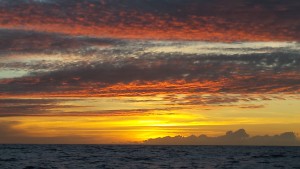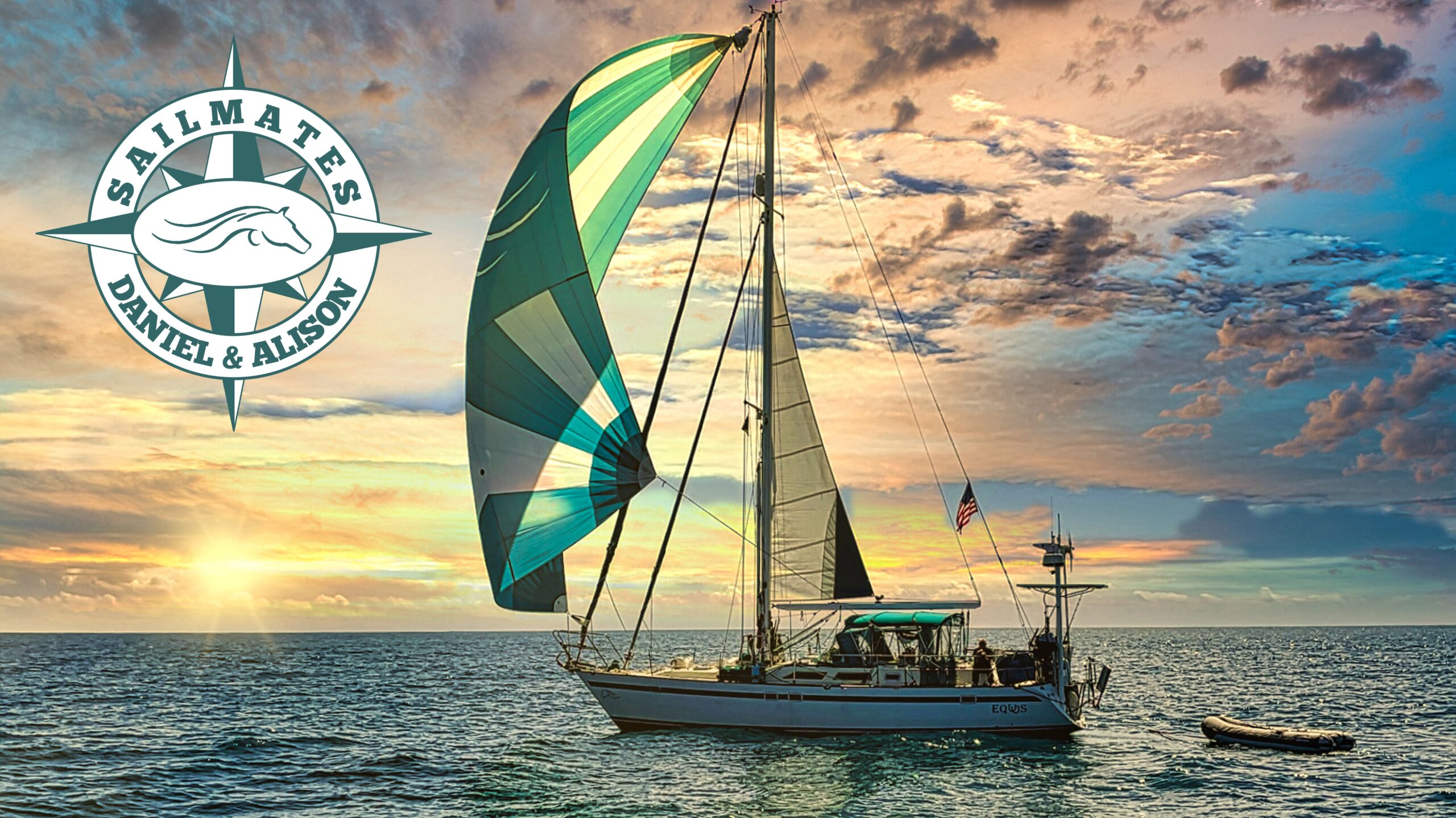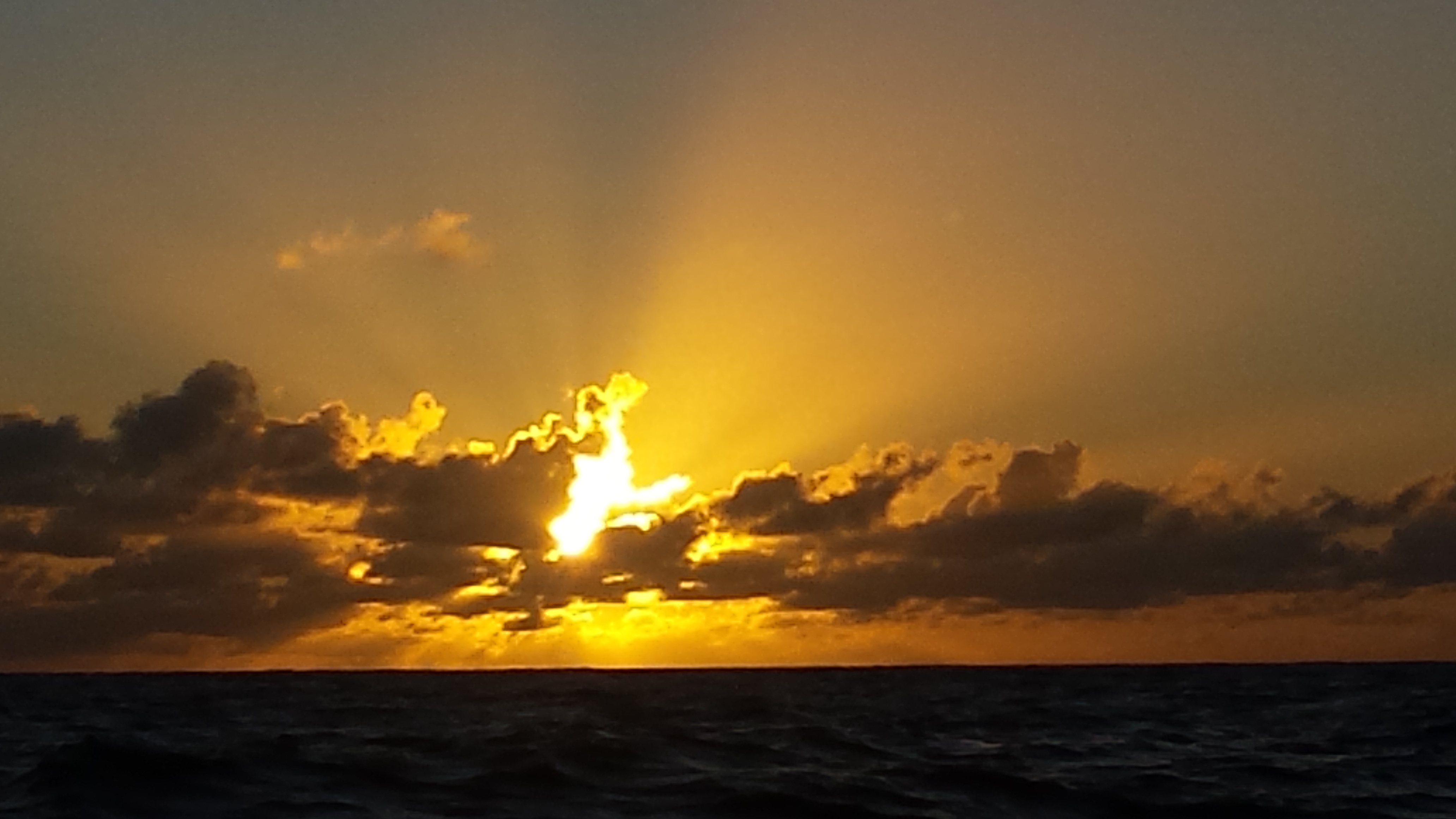John Kretschmer Passage – Part 3
“That’s what sailing is, a dance, and your partner is the sea. And with the sea you never take liberties. You ask her, you don’t tell her. You have to remember always that she’s the leader, not you. You and your boat are dancing to her tune.” ― Michael Morpurgo, Alone on a Wide Wide Sea
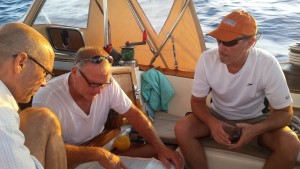
Spending 10 days at sea aboard a 47ft. sailboat meant gaining experience in the day to day skills needed to navigate across an ocean. I was thrilled to learn things like “heaving to” where you can in an instant, turn the boat into the wind under full sail and stop all the motion of the boat. This especially comes in handy when someone accidently goes overboard. I learned the ins and outs of running through the night on autopilot. I even got to take noon sightings with a sextant and learned how to use that information to plot where we were on the chart. This is handy to know in the event your technology goes down and have to rely on your own volition to navigate. But my two favorite lessons on this trip were learning to sail in squalls, and what to do when men with guns board your vessel.
Storms. The main reason I signed up to sail with John Kretschmer. The man has more storm stories than any human being ever should. However, having survived that many catastrophic events at sea, there is no one I would rather face my first bad weather with than this man. When we encountered 8 to 9 foot waves on our first day at sea, I couldn’t help cringe when he kept saying how calm the seas were. I watched with trepidation the rising of the giant waves, towering higher than the sides of our boat and wondering just what constituted rough seas. I kept telling myself that I was in the best possible hands to be making this trek, but my brain was fighting that concept and asking, “just what the heck have you gotten yourself into?” My one request to God, Neptune, and anyone else I could pray to was, “please, let my first bad weather come during the day, not at night. Let me at least face my fears in the light of day!” Fortunately, this request was granted.
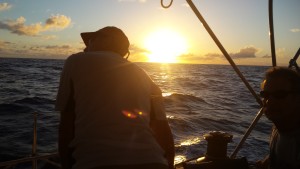
Everyone on board donned their foul weather gear and soon the dark clouds and sheets of driving rain caught up with Quetzal. Dan was at the helm when the first fingers of the squall reached us. Torrents of rain lashed the boat. The crew huddled together under the small area of bimini that offered protection, while Dan stood bravely in the elements and took charge of steering us through the wind and waves. John stayed close by watching the sails and offering tips and advice. The one phenomenon that surprised me was that the waves actually flattened out a bit even though the wind increased. John explained that the force of the fresh water pounding down against the sea sometimes has a flattening effect on the ocean water. I sat quietly and watched the drama unfold. I studied the reactions of the boat, the people attending her, and memorized the feel of the force of nature against our vessel. In about an hour, the winds began to quiet, the dark intensity of the clouds lifted and the rain departed as quickly as it had arrived.
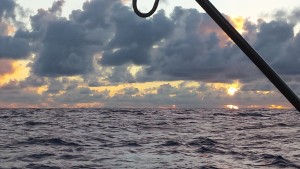
The rest of our passage to Grenada offered strong trade winds and no more squalls. However, as the sun dipped toward the horizon on the first day of our passage back, the familiar sight of dark clouds signaled we were racing against yet another squall. I was ready this time on more than one level. I had sailed in some pretty strong winds, sat and watched through our first squall and was now ready to take the helm and steer in my first storm. The two main differences between this squall and the last were that the waves were a bit higher and darkness was descending. Unenthralled with the situation and nearing dinner time, the entire crew headed down into the cabin, leaving Dan and I on deck. The sails were trimmed, the boat ready, and I was determined to make this event mine. This was my beast and I was going to ride her, all the way home. Little did I know that this beast would stick around for about three hours.
The wind and rains arrived. I handled the boat well as the swells increased and I wondered where the rain water flattening the ocean phenomenon went. Apparently, it does not always happen in all squalls. After the first hour or so, it became increasingly difficult to steer through each of the oncoming waves. As the winds continued to build and the dark shadow of the night swallowed our boat, I Iost my ability to steer cleanly through the waves. I acquiesced, put on the autopilot and let her do her job. As with many autopilots, they work well to keep a course even in bad weather, but their reliability is not 100% and they turn off spontaneously on occasion. For this reason, someone has to be on watch at all times and study the compass to make sure the boat is maintaining the proper heading. As the last bit of light faded from the horizon, I stood at the helm in my rain gear, headphones on, singing at the top of my lungs in the driving rain and had an epiphany. I was in a storm, in the dark, in the middle of the ocean, on a sailboat, and having the time of my life.
Dan stayed on deck with me, even though I was safely tethered to the boat by my safety harness. Perhaps the demonic smile on my face, the fact I was singing and laughing as we hurtled over the vast waves was a bit unsettling for him. For me, to finally face my biggest fear and find joy, exhilaration and a sense of living life to its fullest, was totally empowering. I couldn’t imagine wanting to be anywhere else, doing anything else, more than I wanted to be right there, at that moment. My goal now was for the boat to reach the maximum speed for the trip while I was at the helm. Our average speed had been 7 or even 8 knots. A few times, we had peeked up to the low 9’s. With the current conditions and large swells, as the boat surfed down the larger waves, the knot meter was reaching into the 10’s.
For three hours, while the rest of the crew filtered on and off the deck, had Captain’s Hour and ate dinner, I remained at the helm. After 2 hours, John offer to take over, but I was not about to give up my spot. I was having the time of my life. Each time the boat reached a speed of 10 knots I yelled jubilantly and Dan relayed the news down into the cabin. John would yell back, “great news”. The wind continued to strengthen, Quetzal seemed game to play with me, and I stood at her helm and became her cheerleader to break the 11 knot barrier. Each time we raced down the face of a particularly large wave, I watched with anticipation as the knot meter flickered, 9, 9.8, 10, and even 10.8. 10.8 turned out to be the maximum speed we attained, and it was the fastest speed we reached during our 10 days at sea. I had been at the helm when she reached that speed. It was a personal victory for me. The mere fact that instead of being frightened during an evening squall, I was invigorated and enthralled, meant that this journey had been a success and I truly felt prepared physically and emotionally to handle heavy weather.
